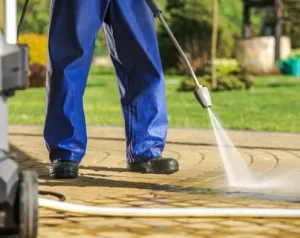10 Benefits of PTFE Coatings on Carbon Graphite Components
Carbon graphite is well-known for its high strength, thermal stability, and self-lubricating properties. From mechanical seals and bearings to bushings and vanes, carbon graphite plays a key role in high-performance systems. However, when paired with polytetrafluoroethylene (PTFE) coatings, the performance of these components can be elevated to a whole new level. Let’s discuss the key benefits that this PTFE material brings.
1. Enhanced Chemical Resistance
Carbon graphite can handle moderate chemical environments, but PTFE coatings take this resistance to the extreme. Acids, solvents, bases, and other corrosive chemicals cannot harm PTFE since it is nearly inert.
Components often come into contact with harsh media in industries like chemical processing or oil and gas. A PTFE-coated carbon graphite part can operate longer and more reliably without degrading, helping extend the life of the equipment and reducing downtime.
2. Outstanding Non-Stick Properties
PTFE is characterized by its low surface energy, which allows it to have exceptional non-stick capabilities. Think of non-stick cookware—the same concept applies here. When carbon graphite components are coated with PTFE, they become less prone to fouling and buildup. Pumps or processing systems help maintain optimal flow and reduce the need for cleaning or maintenance.
3. Improved Wear Resistance
While carbon graphite is naturally wear-resistant, PTFE coatings can further reduce friction and extend the part’s operational life. PTFE minimizes the contact wear between moving parts. For example, this coating reduces surface abrasion in a graphite-based rotary vane pump or sliding bearing. It keeps the system running smoothly, even in dry-running applications.
4. Enhanced Performance in Dry and High-Temperature Conditions
Carbon graphite is often used in dry or semi-lubricated environments because of its self-lubricating properties. However, PTFE coatings can improve this performance by reducing friction coefficient.
In applications where traditional lubricants can’t be used—like vacuum environments or high-heat zones—PTFE-coated graphite components can continue to operate with minimal wear and reduced heat generation. PTFE maintains stability up to approximately 260°C (500°F), which aligns well with the thermal limits of many graphite-based parts.
5. Reduced Energy Consumption
With reduced friction, the component functions more efficiently and wears less. PTFE-coated carbon graphite components spin or move with less force, particularly in motor-driven systems. For example, reducing drag in an industrial pump using PTFE-coated graphite seals can lower energy consumption, potentially lowering operational costs.
6. Protection from Oxidation and Contaminants
One of the lesser-known benefits of PTFE coatings is their ability to shield carbon graphite parts from oxidation and particle contamination. While carbon graphite is heat-resistant, it can oxidize in specific environments if not adequately protected. PTFE acts as a protective barrier, sealing off the carbon graphite surface from exposure to oxygen, moisture, and foreign particles—extending part life and maintaining structural integrity.
7. Consistent Performance Over Time
Uncoated graphite can degrade in certain conditions due to chemical attacks or mechanical wear. PTFE coatings offer a layer of reliability, helping the component maintain consistent performance. Whether sealing under pressure, sliding with speed, or operating under a load, this PTFE material helps preserve carbon graphite’s functional profile over thousands of cycles.
8. Cost-Effectiveness Over the Long Term
While PTFE-coated components may come at a higher upfront cost, the return on investment is significant. Reduced maintenance, longer part life, and better energy efficiency mean lower operational costs in the long run. The added durability and reduced failure rates make PTFE-coated carbon graphite components a wise investment for companies operating in demanding environments.
9. Enhanced Electrical Insulation
PTFE is an excellent electrical insulator. When coated on carbon graphite, it helps protect components in electrically sensitive applications. This is valuable in electronics manufacturing or applications involving sensors and electrical isolation, where electrical conductivity from graphite might otherwise be a concern.
10. Customizable Coating Options for Specific Needs
PTFE coatings can also be tailored for different thicknesses, surface textures, and additional properties (e.g., filled with additives for added strength or conductivity). This versatility means PTFE-coated carbon graphite can be engineered to meet exact performance specs, making it ideal for specialized or high-precision equipment.
Conclusion
Combining PTFE coatings and carbon graphite creates a powerhouse material solution that withstands heat, chemicals, and wear while improving efficiency and performance. Whether in chemical processing, power generation, aerospace, or fluid handling, PTFE-coated components can provide the necessary reliability and longevity.
PTFE should be considered when exploring advanced coating solutions for your carbon graphite parts. Contacting a local PTFE or carbon graphite expert can help you discover more about the perks of coating components for your manufacturing process.






